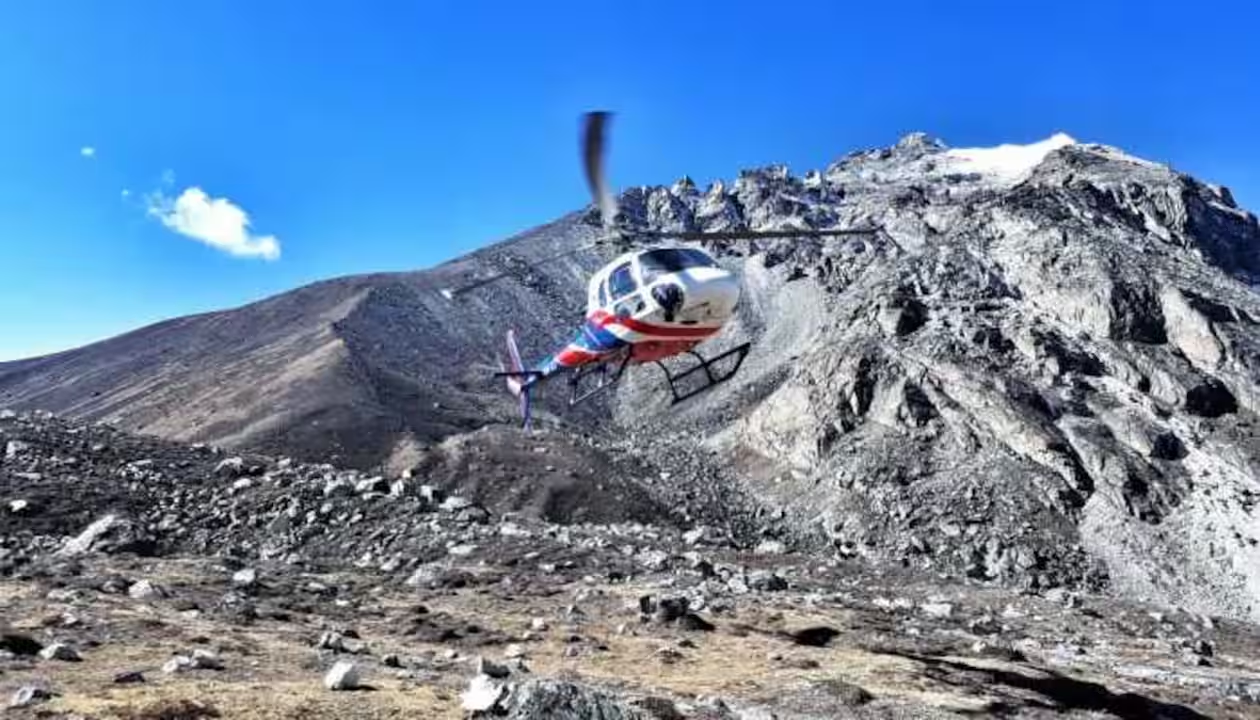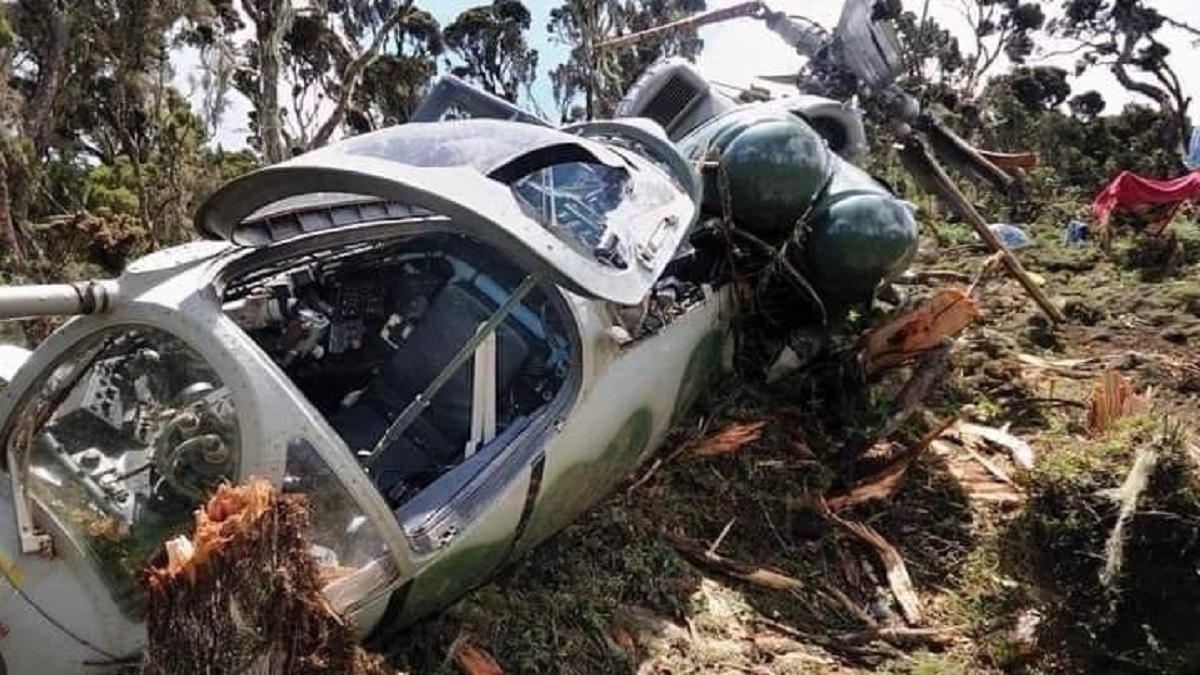Understanding the importance of safety measures in aviation
Aviation safety is of paramount importance in an industry where lives are at stake. The Nepal helicopter crash served as a stark reminder of the hazardous nature of aviation and the need for robust safety measures. Accidents like these highlight the importance of thorough risk assessment, regular equipment maintenance, and comprehensive pilot training. Safety measures are not only crucial for protecting lives but also for maintaining the credibility and trust of the aviation industry. Passengers need to feel confident in the safety of air travel, knowing that rigorous measures are in place to prevent accidents and mitigate risks.
The Nepal helicopter crash has forced the aviation industry to reevaluate existing safety practices and identify areas that require improvement. It has brought safety to the forefront of discussions and prompted a collective effort to enhance standards across the board. By understanding the gravity of the Nepal helicopter crash and its impact on safety regulations, the industry can work towards preventing similar incidents in the future.
Lessons learned from the Nepal Helicopter Crash
Tragedies like the Nepal helicopter crash offer valuable lessons that can shape safety measures for years to come. In the aftermath of the accident, a thorough investigation was conducted to determine the root causes and identify any lapses in safety protocols. The findings were instrumental in identifying areas that needed immediate attention and improvement.
One of the key lessons learned from the Nepal helicopter crash was the importance of pilot training and experience. It was discovered that the pilot involved in the accident had limited experience flying in challenging mountainous terrain. This realization led to a renewed emphasis on specialized training programs for pilots operating in similar environments. Simulators and virtual reality training have become essential tools in preparing pilots for the unique challenges they may encounter.
Furthermore, the investigation revealed issues with communication and coordination between the pilot and ground control. This highlighted the need for improved communication protocols and enhanced teamwork training. Clear and effective communication is crucial in aviation to ensure that everyone involved is on the same page and can quickly address any potential risks or challenges.
Improvements in safety measures post Nepal Helicopter Crash
The Nepal helicopter crash served as a wake-up call for the aviation industry, leading to significant improvements in safety measures. One of the primary areas of focus has been aircraft maintenance. Stricter regulations and more frequent inspections have been implemented to ensure that helicopters and other aircraft are in optimal condition before every flight. Regular maintenance schedules, thorough pre-flight checks, and comprehensive maintenance records are now standard practices to minimize the risk of mechanical failures.
Another crucial aspect that has seen improvements is the development of safety management systems (SMS). These systems provide a structured approach to safety, enabling organizations to identify potential hazards, assess risks, and implement effective mitigation strategies. SMS has become an integral part of aviation operations, ensuring that safety is embedded in every aspect of the industry.
Additionally, advancements in technology have played a significant role in enhancing aviation safety post the Nepal helicopter crash. Helicopters are now equipped with state-of-the-art navigation systems, terrain awareness and warning systems (TAWS), and enhanced situational awareness tools. These technological advancements aid pilots in making informed decisions and navigating challenging environments safely.
The role of technology in enhancing aviation safety
Technology has revolutionized the aviation industry, making air travel safer than ever before. In the aftermath of the Nepal helicopter crash, the importance of leveraging technology to enhance safety measures became evident. From advanced weather forecasting systems to real-time monitoring of aircraft performance, technology has become an indispensable tool in minimizing risks and preventing accidents.
One significant technological advancement is the use of Unmanned Aerial Vehicles (UAVs) for surveillance and inspection purposes. UAVs can be deployed to assess risky areas and monitor potential hazards, reducing the need for human intervention in high-risk situations. Additionally, data analytics and artificial intelligence are being utilized to analyze flight data and identify patterns or anomalies that may indicate safety concerns.
Furthermore, the development of communication systems and satellite technology has greatly improved emergency response capabilities. In the event of an accident or emergency, rescue teams can quickly locate and reach the affected area, reducing response times and increasing the chances of survival.
Case studies of other aviation accidents that have shaped safety measures
The Nepal helicopter crash is not an isolated incident that has prompted changes in safety measures. Throughout history, various aviation accidents have played a crucial role in shaping safety regulations and practices. Each tragedy has led to investigations, findings, and subsequent improvements aimed at preventing similar incidents from occurring again.
One such case study is the Tenerife airport disaster in 1977, where two Boeing 747 aircraft collided on the runway, resulting in the loss of 583 lives. This catastrophic event highlighted the importance of effective communication and the need for standardized phraseology in air traffic control. As a result, significant changes were made to air traffic control practices, including the implementation of standardized phraseology and enhanced training programs.
Another notable case study is the crash of Air France Flight 447 in 2009. This incident, which claimed the lives of all 228 passengers and crew on board, revealed the dangers of relying too heavily on automation and the need for proper pilot training in manual flying skills. Following this accident, training programs were revised to include manual flying exercises and emphasize the importance of pilot decision-making skills.
These case studies serve as reminders of the devastating consequences that can arise from lapses in safety measures. They reinforce the ongoing commitment of the aviation industry to learn from past mistakes and continuously improve safety practices.
The role of regulatory bodies in enforcing safety measures
Regulatory bodies play a vital role in enforcing safety measures in the aviation industry. They are responsible for setting standards, conducting inspections, and ensuring compliance with safety regulations. In the aftermath of the Nepal helicopter crash, regulatory bodies worldwide have intensified their efforts to enhance safety practices and prevent similar incidents.
International organizations such as the International Civil Aviation Organization (ICAO) and regional bodies like the Federal Aviation Administration (FAA) in the United States have been actively involved in developing and implementing safety regulations. These organizations work closely with industry stakeholders to establish guidelines and promote best practices.
Additionally, national aviation authorities have a crucial role in enforcing safety measures within their respective countries. They conduct audits, inspections, and certifications to ensure that airlines, pilots, and aircraft meet the required safety standards. Through continuous monitoring and collaboration with industry stakeholders, regulatory bodies strive to create a culture of safety and accountability.

Steps individuals can take to ensure their safety while traveling
While the aviation industry and regulatory bodies are working diligently to improve safety measures, individuals can also take steps to ensure their safety while traveling. Passengers have the right to be informed and proactive about their own well-being. Here are some measures individuals can take:
- Research airlines and operators: Before booking a flight or helicopter tour, research the reputation and safety record of the airline or operator. Look for reviews and safety ratings to make an informed decision.
- Check maintenance records: Ask for maintenance records and ensure that the aircraft you will be flying on has undergone regular inspections and maintenance.
- Stay informed about weather conditions: Stay updated on weather conditions that may affect your flight. If adverse weather is expected, consider rescheduling or choosing an alternative mode of transportation.
- Follow safety instructions: Pay attention to safety briefings and instructions provided by the crew. Familiarize yourself with emergency exits and evacuation procedures.
- Be aware of your surroundings: During the flight, remain aware of your surroundings and report any suspicious activities or items to the crew.
- Report safety concerns: If you notice any safety concerns or potential hazards, report them to the appropriate authorities or airline representatives.
By being proactive and vigilant, individuals can contribute to their own safety and help maintain an industry-wide culture of safety.
Conclusion: The ongoing efforts to improve safety in the aviation industry
The Nepal helicopter crash served as a tragic reminder of the importance of safety in aviation. This devastating incident has prompted significant changes in safety measures, with the aim of preventing similar accidents and protecting lives. The lessons learned from the Nepal helicopter crash have led to improvements in pilot training, aircraft maintenance procedures, and the use of technology to enhance safety.
Aviation safety is a collective responsibility that involves the efforts of regulatory bodies, industry stakeholders, and individuals alike. Ongoing collaboration, research, and advancements in technology will continue to shape safety measures in the aviation industry. By learning from tragedies like the Nepal helicopter crash and implementing necessary changes, the industry can ensure that air travel remains one of the safest modes of transportation.

.png)

.png)
